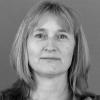Senior researcher Infectious Diseases in Primary Care, surveillance
Publicatie
Publication date
Paternal occupation and birth defects: findings from the National Birth Defects Prevention Study.
Desrosiers, T.A., Herring, A.H., Shapira, S.K., Hooiveld, M., Luben, T.J., Herdt-Losavio, M.L., Lin, S., Olshan, A.F. Paternal occupation and birth defects: findings from the National Birth Defects Prevention Study. Occupational and Environmental Medicine: 2012, 69(8), p. 534-542.
Download the PDF
Objectives: Several epidemiological studies have suggested that certain paternal occupations may be associated with an increased prevalence of birth defects in offspring. Using data from the National Birth Defects Prevention Study, the authors investigated the association between paternal occupation and birth defects in a case–control study of cases comprising over 60 different types of birth defects (n=9998) and non-malformed controls (n=4066) with dates of delivery between 1997 and 2004. Methods: Using paternal occupational histories reported by mothers via telephone interview, jobs were systematically classified into 63 groups based on shared exposure profiles within occupation and industry. Data were analysed using Bayesian logistic regression with a hierarchical prior for dependent shrinkage to stabilise estimation with sparse data. Results: Several occupations were associated with an increased prevalence of various birth defect categories, including mathematical, physical and computer scientists; artists; photographers and photo processors; food service workers; landscapers and groundskeepers; hairdressers and cosmetologists; office and administrative support workers; sawmill workers; petroleum and gas workers; chemical workers; printers; material moving equipment operators; and motor vehicle operators. Conclusions: Findings from this study might be used to identify specific occupations worthy of further investigation and to generate hypotheses about chemical or physical exposures common to such occupations. (aut. ref.)
Objectives: Several epidemiological studies have suggested that certain paternal occupations may be associated with an increased prevalence of birth defects in offspring. Using data from the National Birth Defects Prevention Study, the authors investigated the association between paternal occupation and birth defects in a case–control study of cases comprising over 60 different types of birth defects (n=9998) and non-malformed controls (n=4066) with dates of delivery between 1997 and 2004. Methods: Using paternal occupational histories reported by mothers via telephone interview, jobs were systematically classified into 63 groups based on shared exposure profiles within occupation and industry. Data were analysed using Bayesian logistic regression with a hierarchical prior for dependent shrinkage to stabilise estimation with sparse data. Results: Several occupations were associated with an increased prevalence of various birth defect categories, including mathematical, physical and computer scientists; artists; photographers and photo processors; food service workers; landscapers and groundskeepers; hairdressers and cosmetologists; office and administrative support workers; sawmill workers; petroleum and gas workers; chemical workers; printers; material moving equipment operators; and motor vehicle operators. Conclusions: Findings from this study might be used to identify specific occupations worthy of further investigation and to generate hypotheses about chemical or physical exposures common to such occupations. (aut. ref.)

